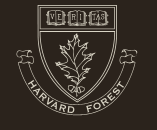

Harvard Forest
Overview
Researchers began the census of woody stems within the 35 ha plot located on Prospect Hill on June 1, 2010. Using standardized ForestGEO methodology, Dave Orwig and three 2-person crews measured, tagged, painted, and mapped every stem greater than 1 cm diameter at 1.3 m. Field crews entered quadrat data daily. Vegetation sampling ended August 27, 2010. During the 13-week period, 29,908 stems were tagged, mapped, and measured, representing approximately 13 hectares. The 3 western columns were particularly dense, containing dense thickets of mountain laurel (Kalmia latifolia). Stem densities averaged 2,301/ha and ranged from 1,756 to 3,071/ha. All stems were entered twice into the temporary database during the summer, and Dave Orwig will continue to screen and edit all data for uploading to the database during autumn 2010. In addition, work will proceed with digitally mapping all stems contained on the 1,300 10 x 10 maps produced from the 13 ha of forest.
The Harvard Forest plot is dominated by eastern hemlock and northern hardwood species, and will make an excellent comparison with several other hardwood plots in North America and China at similar latitudes. This plot is part of a global array of large-scale plots established by ForestGEO, which recently expanded sampling efforts into temperate forests to explore ecosystem processes beyond population dynamics and biodiversity. The geography and size of the Harvard Forest plot (500 m x 700 m) was designed to include a continuous, expansive, and varied natural forest landscape that will yield opportunities for the study of forest dynamics and demography while capturing a large amount of existing science infrastructure (e.g., eddy flux towers, gauged sections of a small watershed, existing smaller permanent plots) that will enable the integrated study of ecosystem processes (e.g., biogeochemistry, hydrology, carbon dynamics) and forest dynamics . Thus, the resulting data will integrate well with ongoing NSF-funded LTER (Long Term Ecological Research) and NEON (National Ecological Observatory Network) studies.
Longitude: -72.175500000000